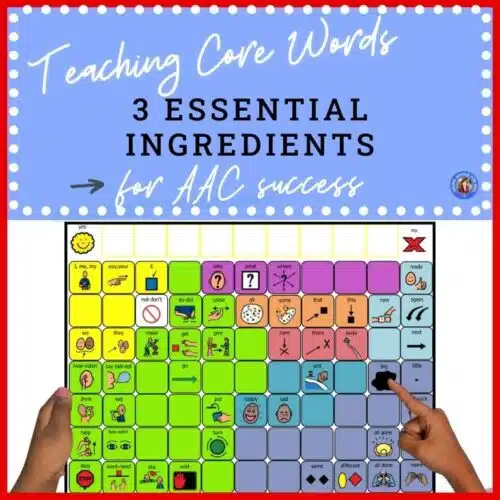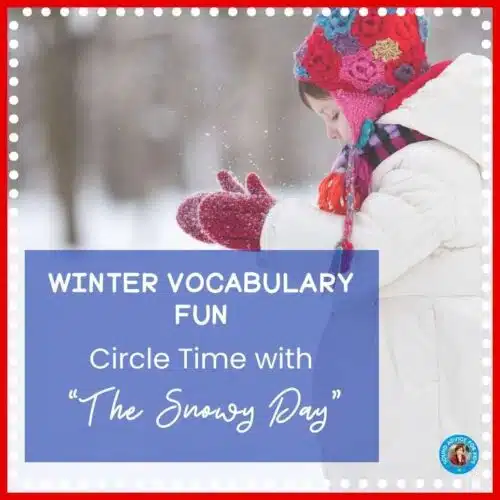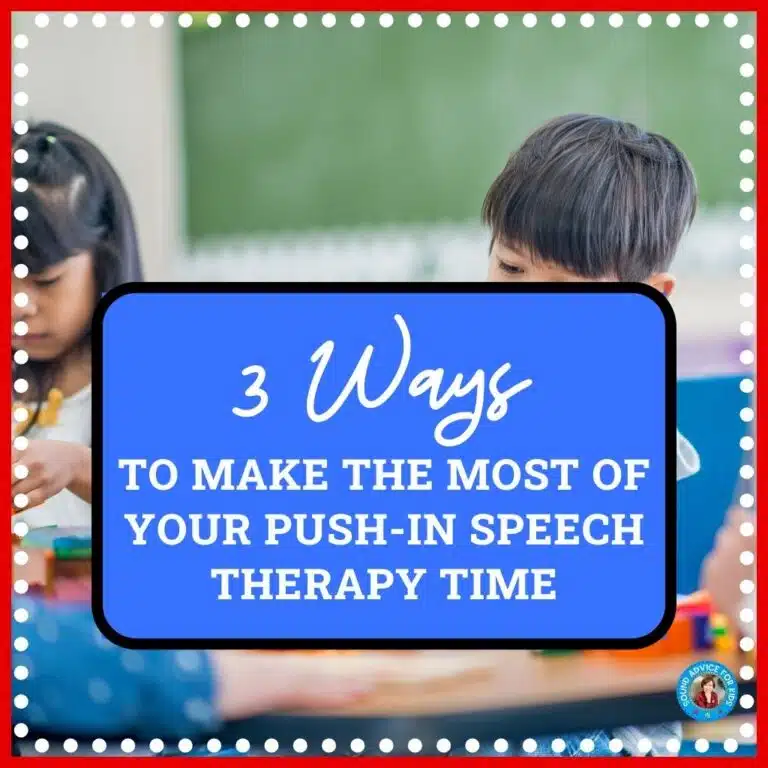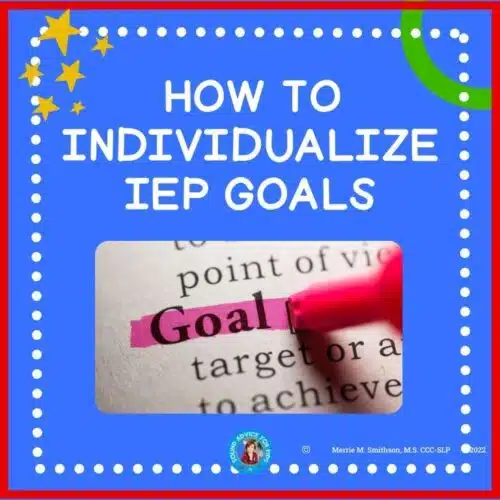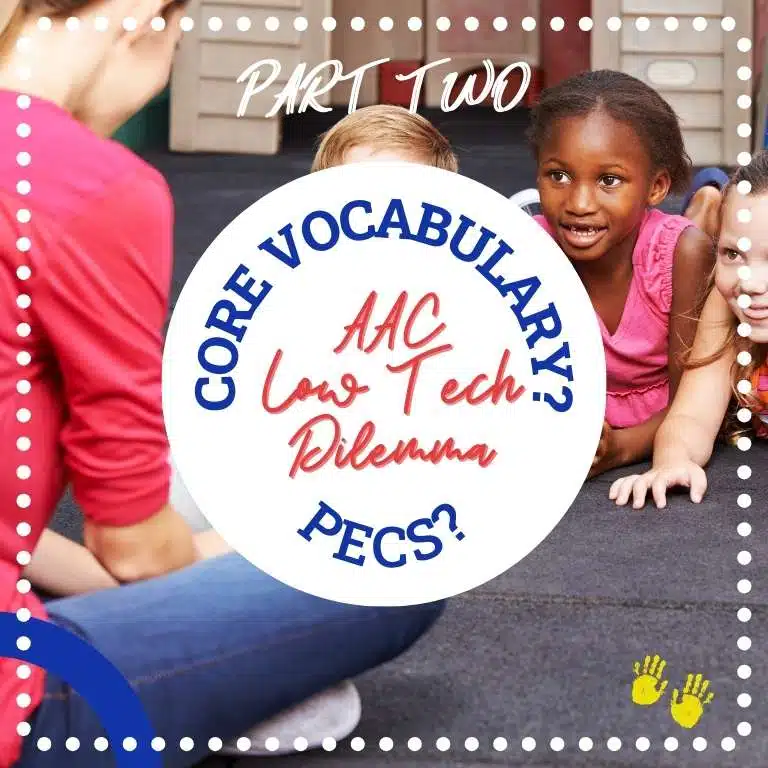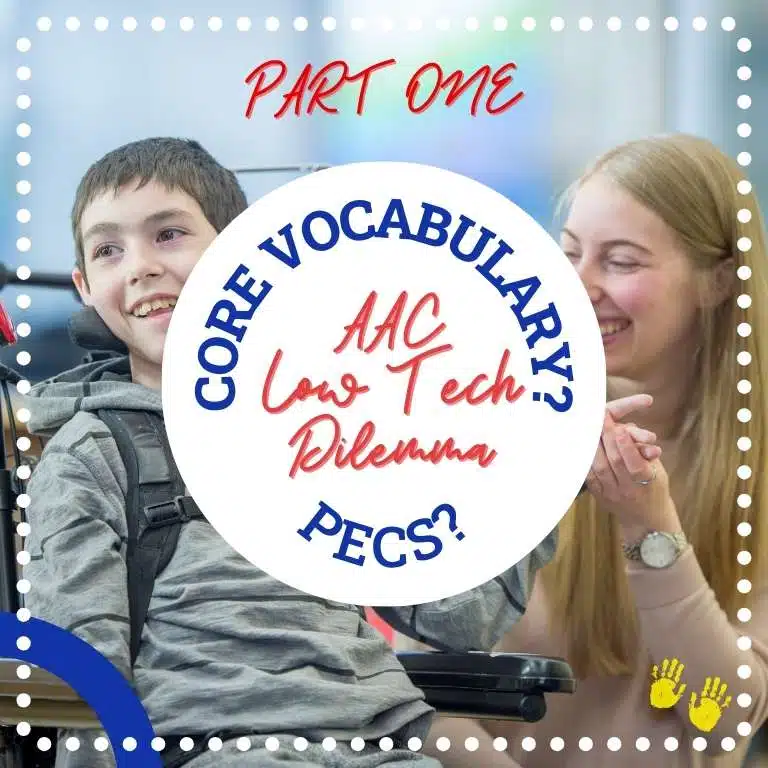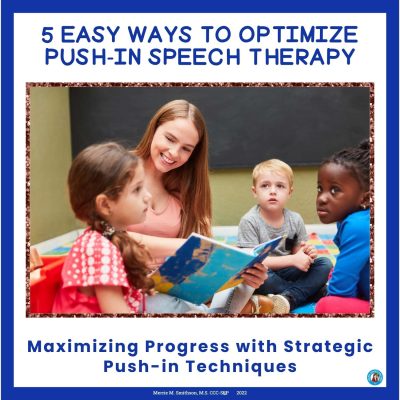I’m a big fan of teaching core words using a Core Vocabulary approach. I use core vocabulary with my preschool students who have limited language or who require AAC to communicate.
In my mind, there are THREE essential ingredients for students to be successful using core vocabulary. All three, in my experience, need to be used when teaching core words.
FIRST ESSENTIAL INGREDIENT FOR TEACHING CORE WORDS
Number 1: Students need to understand the meaning of the word. This is receptive language. To do this, teach core words during activities so your students will experience the meaning of the word. The more sensory modalities the better.
For example, if you’re teaching the core word “GO,” think of all the situations where you can use this word and then incorporate your ideas into your core word lesson plan. Here are a few ideas:
- Get your students to perform body movements (clap hands, stomp feet, etc.) when you say, “GO.”
- When outside during recess, get your students to race each other when you say, “GO.”
- If you have swings available, start pushing after you say, “GO.”
- Get a racetrack for toy cars and release the car when you say, “GO.”
- Get a marble works game and release the marble when you say, “GO.”
- Put a video on your interactive whiteboard. Don’t start it until “GO.”
- Play the freeze game. After your stop the music and the kids freeze, say “GO” when the music starts again.
SECOND ESSENTIAL INGREDIENT FOR TEACHING CORE WORDS
Number 2: Students need to associate the word with the icon on the communication board. They need to recognize it as meaning the same thing as the spoken word. This is receptive language. I like combining receptive and expressive language opportunities as soon as possible. For example, I take out my laminated portable communication board and use it while engaging in activities like the ones mentioned above. I’ll show and point to the icon every time I say the word, “GO.”
After the kids get familiar with the icon, I’ll hold up the board before we start the activity, point to the icon, and wait to see if anyone can say the word, “GO” before we start the activity. Or, I might say, “What do you want to do?” and wait for them to touch “GO” on their own boards before continuing. This is expressive language.
THIRD ESSENTIAL INGREDIENT FOR TEACHING CORE WORDS
Number 3: Students need to locate the icon on the communication board as quickly as possible, without any hesitation. Finding the icon needs to become an automatic motor response in the same way that the motor movements necessary for speaking need to become automatic. Otherwise, communication will be stilted and won’t flow easily between communication partners. This is expressive language.
The best way to do this, in my experience, is to place the icon on the communication board in the same place every time, even as the number of icons on the board increases. Students need to know they can count on the icon being in the same place time after time.
This requires two things: a masked communication board that allows for continued vocabulary growth AND repeated practice locating the icon.
I use a large classroom-sized communication board during circle time. If appropriate, I give each student a small individual board they can use during the activity. Students take turns coming up to the large board and pointing to the icon during circle time activities. The rest of the students point to the icon on their individual boards when it’s not their turn. When we transition from circle time to another activity, I’ll encourage students to come up to the board and locate the targeted word before they move to the next activity.
To help students find the correct icon, place one flexible yarn-like waxy stick around the borders of the icon. This will call attention to the icon so it will be easier to find. I often use these sticks on smaller communication boards as well. (I’m not an affiliate seller for this product.)
I also place small communication boards around the room so they are easy to find when needed. I ask the classroom staff to use a communication board during an activity by pointing to and saying targeted words. When the students transition again, students point to the icon before transitioning.
Hey, in case you didn’t realize, teaching core words within the classroom setting is simple and natural. All three of these elements are easy to incorporate into Push-in Speech Therapy!

